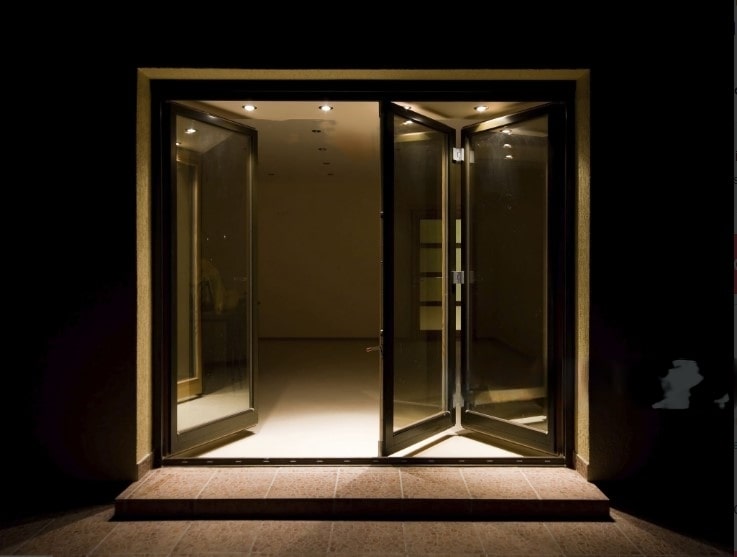Is Your Flexsteel Recliner Acting Up? Are you frustrated with the creaking noises, uneven reclining, or stuck footrests? Well, you’re not alone! While Flexsteel is known for its durable and high-quality recliners, even the best can encounter a few hiccups. But fear not! In this blog post, we’ll explore some common issues that may arise with your beloved Flexsteel recliner and provide you with troubleshooting tips and DIY fixes to get it back in top shape. So sit back (or recline), and let’s dive into solving those pesky problems together!
Contents
- 1 Common Issues with Flexsteel Recliners
- 2 Troubleshooting Tips for Specific Problems
- 3 DIY Fixes for Minor Issues
- 4 When to Call a Professional
- 5 Maintaining Your Flexsteel Recliner for Longevity
- 6 Alternatives to Repairing or Replacing Your Recliner
- 7 Conclusion: Keep Your Flexsteel Recliner in Top Shape
Common Issues with Flexsteel Recliners
Flexsteel recliners are built to provide comfort and relaxation, but like any piece of furniture, they can experience some common issues over time. One issue that may arise is a creaking noise when you recline or sit in your chair. This could be due to loose bolts or screws that need tightening.
Another problem you might encounter is an uneven reclining mechanism. If one side of the recliner seems higher or lower than the other, it could be a sign of worn-out springs or misaligned components. Adjusting the tension on the springs or realigning the parts may help resolve this issue.
Stuck footrests are another annoyance that can occur with Flexsteel recliners. Dirt and debris can sometimes accumulate in the hinges or tracks, preventing smooth movement. A thorough cleaning and lubrication of these areas should do the trick.
Upholstery problems such as tears, fraying fabric, or fading colour may also crop up. While these issues are more cosmetic, they can still impact your overall satisfaction with your Flexsteel recliner.
It’s important to remember that while these issues may be frustrating at times, they are usually fixable with a bit of troubleshooting and DIY know-how. So don’t worry – we’ve got solutions for all those common glitches!
Troubleshooting Tips for Specific Problems
1. Recliner won’t recline: If your Flexsteel recliner refuses to recline, check the power source first. Please make sure all of the connections are tight and that it is correctly plugged in. If that doesn’t solve the issue, try resetting the reclining mechanism by unplugging it for a few minutes before plugging it back in.
2. Footrest won’t extend or retract: If you’re having trouble with your recliner’s footrest, check if anything is blocking its movements, such as debris or an object stuck underneath. Give it a gentle push while applying pressure on the release lever to see if this resolves the problem.
3. Uneven or noisy operation: Is your Flexsteel recliner making odd noises or operating unevenly? This could be due to worn-out springs or cables inside the chair. Scrutinize these components and replace them if necessary.
4. Upholstery issues: Over time, wear and tear can take a toll on your recliner’s upholstery. To fix minor tears or snags, consider using fabric glue or patching material specifically designed for furniture repair.
5. Remote control problems: If your remote control isn’t working properly, check its batteries and ensure they are correctly inserted. Additionally, ensure no obstructions between the remote and the receiver on your chair.
DIY Fixes for Minor Issues
Is your beloved Flexsteel recliner experiencing minor issues you’d like to tackle alone? Don’t worry; we’ve got you covered! Here are some simple DIY fixes to help get your recliner back in tip-top shape.
If you notice any squeaking or creaking noises when you recline or sit up, it could be due to loose screws. Grab a screwdriver and tighten any loose screws in the frame of your recliner. This easy fix can provide immediate relief from annoying noises.
Another common issue is a stuck footrest. If you struggle to extend or retract the footrest smoothly, apply lubricant to the hinges and joints. This can help loosen up any sticky parts and ensure smooth operation.
If your recliner’s upholstery has seen better days and is starting to look worn or torn, don’t fret! You can quickly patch up small tears using a fabric repair kit. Follow the instructions provided with the kit and carefully mend the damaged area.
In case of sagging cushions, consider adding extra padding by using foam inserts or additional cushioning materials. This will make sitting more comfortable and restore support to prevent further damage.
Remember that these DIY fixes are intended for minor issues only. If you encounter more complex problems, such as broken mechanisms or severe structural damage, it’s best to leave it in the hands of furniture repair professionals.
Taking care of these minor issues yourself will save money on professional repairs and prolong your Flexsteel recliner’s life. So roll up those sleeves and try these simple fixes – your favourite spot for relaxation will thank you!
When to Call a Professional
While it’s great to tackle minor issues on your own, sometimes you may encounter problems with your Flexsteel recliner that require the expertise of a professional. Here are some instances when it’s best to pick up the phone and call in the pros.
1. Structural Damage: If you notice any significant damage to your recliner’s frame or internal mechanisms, such as broken springs or bent metal parts, it’s time to seek professional help. Attempting DIY repairs could worsen the problem or even pose a safety risk.
2. Electrical Malfunctions: If your electric recliner is not functioning correctly, only attempt electrical repairs if you have experience. Faulty wiring can be dangerous and should be handled by a qualified technician who can diagnose and fix electrical issues.
3. Reclining Mechanism Failure: When your recliner refuses to lock in place or struggles to extend fully, it may indicate a problem with the reclining mechanism itself. This requires specialized knowledge and tools for repair, so calling a professional is advised.
4. Warranty Coverage: If your Flexsteel recliner is still under warranty, contacting an authorized service centre will ensure that any necessary repairs are done without voiding your warranty coverage.
Maintaining Your Flexsteel Recliner for Longevity
Your Flexsteel recliner is an investment that deserves proper care and maintenance to ensure its longevity. You can keep your recliner in top shape for years by following a few simple steps.
Regularly clean your recliner using the manufacturer’s recommended cleaning products. Steer clear of using anything abrasive or harsh on the upholstery, which could cause damage. Wipe down the surface with a soft cloth or vacuum any crumbs or debris between cushions.
Pay attention to the moving parts of your recliner. Lubricate hinges and springs as needed to prevent squeaking and ensure smooth operation. Consult the user manual or contact Flexsteel for specific instructions on lubrication.
Additionally, protect your recliner from excessive sunlight and heat exposure, which can cause fading and drying out of the upholstery material. Consider using window treatments or covers when necessary.
Be mindful of how you use your recliner. Avoid placing heavy objects on it or jumping into it forcefully. Use caution when operating the mechanism to avoid putting unnecessary strain on components.
By incorporating these maintenance practices into your routine, you’ll enjoy the comfort and functionality of your Flexsteel recliner for many years without significant issues arising.
Alternatives to Repairing or Replacing Your Recliner
If you’re facing issues with your Flexsteel recliner and are considering alternatives to repairing or replacing it, there are a few options worth exploring. One option is to try out some DIY fixes that can help address minor issues. These could include tightening loose screws, lubricating squeaky parts, or adjusting the tension in the reclining mechanism.
Another alternative is to consider getting professional help. Sometimes, complex problems require the expertise of a skilled technician who specializes in repairing furniture. They will have the necessary tools and knowledge to diagnose and fix any major issues with your recliner.
If repair isn’t an option or you’re ready for a change, you should explore trading or selling your current Flexsteel recliner. There may be someone out there looking for exactly what you have! Additionally, many retailers offer trade-in programs where you can exchange your old furniture for credit toward a new purchase.
If none of these alternatives appeal to you, it may be time to start researching new recliners. The market offers various models and brands that better suit your needs than trying to salvage an old chair.
Remember that maintaining proper care for your Flexsteel recliner will go a long way in preventing future problems. Regular cleaning and maintenance can extend its lifespan significantly.
While repairing or replacing might be the most obvious choice when dealing with flex steel recliner problems, exploring alternatives can provide valuable solutions, too.
Conclusion: Keep Your Flexsteel Recliner in Top Shape
Taking care of your Flexsteel recliner doesn’t have to be daunting. By addressing common issues, troubleshooting specific problems, and performing DIY fixes when possible, you can keep your recliner functioning smoothly for years to come.
Remember to identify the issue you’re experiencing with your Flexsteel recliner before jumping into any repairs or adjustments. This will ensure you use the appropriate troubleshooting steps and avoid unnecessary damage.
For minor issues like squeaking or uneven footrests, try simple DIY fixes such as lubricating moving parts or adjusting tension screws. These small actions can make a big difference in restoring comfort and functionality to your recliner.
Nonetheless, there can be situations in which expert assistance is required. If you encounter complex mechanical problems or electrical malfunctions beyond your expertise, it’s best to call a qualified technician specialising in repairing furniture.
To extend the lifespan of your Flexsteel recliner, make maintenance a regular habit. Wipe down the upholstery regularly to prevent dirt build-up, and use appropriate cleaning products recommended by the manufacturer. Avoid placing heavy objects on the footrest or rocking mechanism, as this can cause strain on these components over time.
In some cases, repairing or replacing specific parts of your Flexsteel recliner might not be feasible due to the age or availability of spare parts. When faced with this situation, consider exploring alternatives such as reupholstering or investing in slipcovers that can breathe new life into an ageing recliner while protecting it from further wear and tear. Following these tips and maintaining a proactive approach towards caring for your Flexsteel recliner will ensure many more comfortable moments spent lounging after long days at work or cosy movie nights at home.



